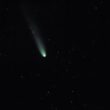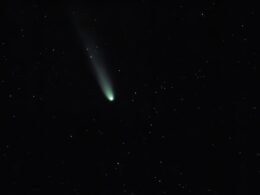The solar system is currently hosting a rare and spectacular visitor: interstellar comet 3I/ATLAS. Discovered in late June and confirmed by NASA in July 2025, 3I/ATLAS is only the third known object to reach us from beyond the solar system, following the famous 1I/‘Oumuamua in 2017 and 2I/Borisov in 2019. What makes 3I/ATLAS even more intriguing is its sheer size—estimated at between 3 and 7 miles wide (5 to 11 kilometers)—which means it likely rivals or surpasses all previously detected interstellar objects, and possibly even some of our solar system’s biggest comets.
By the time astronomers first caught sight of this cosmic nomad, it was already blasting through space at about 137,000 miles per hour (221,000 km/h). For comparison’s sake, that’s like circling the Earth more than five times in a single minute. As it swings closer to the Sun, gravity will speed it up even more—a telltale sign that it’s not bound to our solar system and originally hailed from a distant, long-lost star system billions of years ago.
Unusually Active and Under Scrutiny
Early NASA telescope images have shown 3I/ATLAS to be “unusually active,” with the comet ejecting a vast jet of gas and dust as it heats up near the Sun. This is pretty standard comet behavior, experts say, but the intensity has still raised eyebrows. In fact, because of some strange features and its mysterious origin, a handful of researchers have (controversially) floated the idea it could even be an alien spacecraft scoping us out. The vast majority of scientists, though, are sticking to the evidence: this is a high-speed, icy comet behaving as comets usually do.
Eyes on December 19, 2025
Worldwide, astronomers—including teams from the Galileo Project Observatories—are tracking 3I/ATLAS’ every move. The International Asteroid Warning Network and the Minor Planet Center have both kicked off special observation campaigns to make the most of this rare encounter. The comet’s closest approach to Earth is expected on December 19, 2025—a date circled on astronomers’ calendars as humanity’s next “interstellar blind date.”
Besides generating excitement, 3I/ATLAS gives scientists a one-of-a-kind chance to learn about planetary systems beyond our own. Its journey reminds us how the solar system is less an isolated neighborhood than a crossroads for ancient, interstellar travelers—some carrying tales from the time before our Sun was even born.










